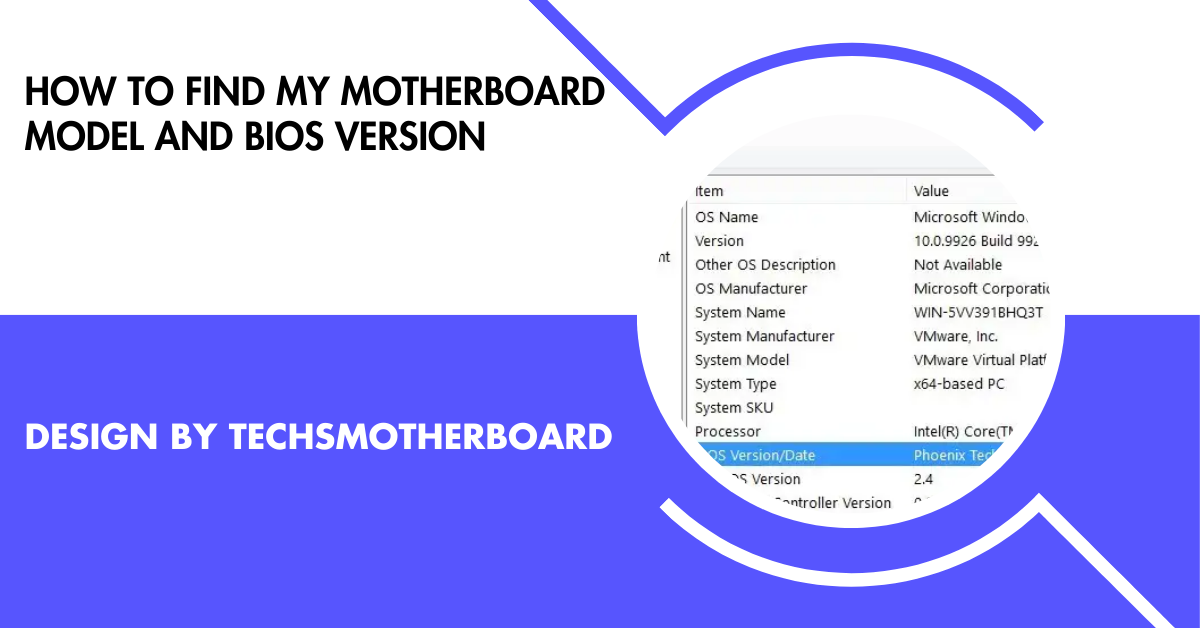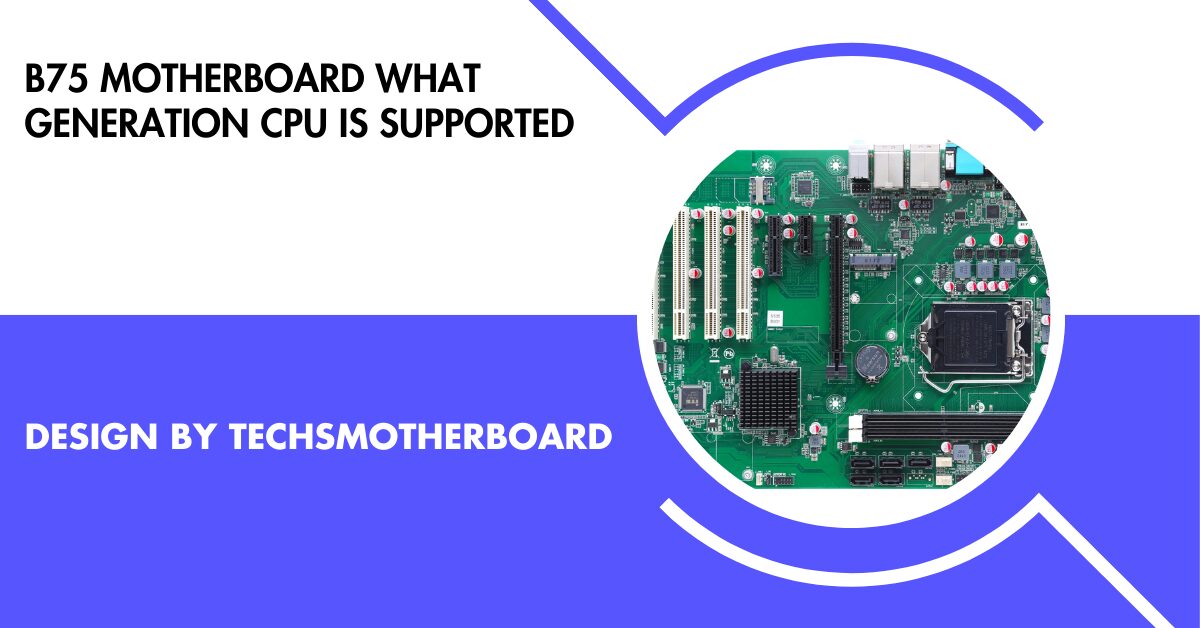Business
Best Practices for Selecting and Setting Up Tower Servers

Introduction
Establishing a reliable, high-performing IT infrastructure begins with making informed decisions about your server environment. Selecting and setting up the right tower server requires a careful analysis of your organization’s present needs and plans. Modern businesses rely heavily on the seamless operation of their digital resources, so investing time in choosing the best-fit tower server pays dividends through increased stability and efficiency. By following industry best practices, you ensure your server not only supports your current business operations but also lays the groundwork for future scalability. For organizations comparing their options, it’s helpful to explore a wide range of tower servers for businesses that balance flexibility, scalability, and advanced security features. Choosing and implementing the right system is essential not only for safeguarding your organization’s data but also for controlling operational costs and optimizing long-term value.
Understanding the key steps in server selection and setup—such as performance assessment, environmental factors, and future-proofing—positions your organization for success. Whether you operate a small business starting its digital journey or manage a large enterprise upgrading its infrastructure, these best practices will help you manage your server environment with confidence, efficiency, and maximum security. By establishing a strategic framework, you can reduce risks, minimize unforeseen expenses, and support uninterrupted business growth.
Assessing Performance Requirements
Begin your selection process by conducting a thorough analysis of your organization’s daily IT requirements. Carefully identify all the main tasks your server must handle—whether it’s running resource-intensive databases, supporting virtualized environments, hosting applications, or providing simple file and print sharing. Each function places unique demands on hardware. Carefully match CPU specifications, memory capacity, and storage type (SSD vs. HDD) with your organization’s requirements to avoid bottlenecks. For complex applications, creative agencies, or growing e-commerce platforms, prioritize servers with high-frequency processors, multiple cores, and abundant RAM so your services remain fast and reliable, even under peak loads. Allocating the right resources from the start not only improves user experiences but also preserves productivity as your workforce expands and demands intensify.
Evaluating Scalability Options
Future-readiness begins with a server designed for easy expansion. A critical aspect of server longevity is its ability to accommodate growing workloads and data storage needs over time. Opt for tower servers with multiple open drive bays, extra memory slots, and PCIe expansion slots. As your company evolves and your data volume increases, being able to add storage drives, upgrade memory, or install new networking components prolongs your server’s relevance and prevents costly rip-and-replace scenarios. By prioritizing scalable hardware, you ensure that your organization’s ambitions do not outpace your server investment. This approach also spreads the total cost of ownership over a longer period, improving budgeting accuracy and safeguarding your company’s ability to respond to new opportunities.
Considering Physical Space and Environment
Tower servers require thoughtful placement to ensure optimal performance and operational safety. These servers, unlike rack-mounted options, are designed to operate standing upright in areas such as IT rooms, network closets, or even office corners, making them suitable for environments where rack systems aren’t feasible. Select a location characterized by strong airflow and away from contaminants like dust and moisture, as these elements can quickly degrade components. A consistent, cool temperature should be maintained, and humidity levels managed to prevent hardware corrosion or overheating. Physical security, including server cages or locked rooms, is equally important to deter unauthorized access and accidental interference. Proper environmental planning extends the lifespan of your hardware and reduces the likelihood of service disruptions due to overheating or physical damage.
Budgeting for Your Server Investment
Determining your server budget requires looking well beyond the sticker price. Consider the full lifecycle cost of your tower server, encompassing the initial acquisition and all subsequent expenses, including electricity, routine maintenance, software licensing fees, and extended warranty or support contracts. Anticipating future upgrade costs is also wise, as your business’s scale and needs will inevitably change. Evaluate and compare server solutions not only in terms of hardware features but also in terms of their total cost of ownership. Striking a balance between budget constraints and the need for robust, adaptable technology will keep your organization financially healthy. Smart investments in areas such as warranty coverage and energy-efficient models can help reduce unexpected expenses and make your server investment a reliable asset for years to come.
Ensuring Compatibility and Integration
Seamless integration with your existing IT environment is a cornerstone of a successful server deployment. Before finalizing your purchase, thoroughly verify that the new server supports your current operating systems, business-critical applications, and network devices. Incompatible components can cause frustrating delays, workflow interruptions, and may even introduce security vulnerabilities if outdated drivers or software are required. Leveraging industry-standard protocols and ensuring hardware compatibility allows for streamlined expansion, smoother migrations, and reduced complexity when adopting new technologies. This best practice also facilitates clear communication between your server and the rest of your IT ecosystem, enhancing overall infrastructure performance and resilience.
Prioritizing Reliability and Redundancy
Your tower server is a mission-critical component for business continuity. To minimize downtime, invest in models equipped with redundant power supplies, RAID-supported storage configurations, and hot-swappable drives. Such features ensure uninterrupted service even if individual parts fail, which is vital for organizations that cannot afford operational disruptions. Servers with built-in failover mechanisms and health diagnostic tools provide instant alerts and, in some cases, automatic recovery. These capabilities not only safeguard sensitive data but also reduce labor costs and speed up resolution during maintenance or crisis events. In scenarios where continuous service is paramount, redundancy features distinguish reliable servers from those that put your productivity and reputation at risk.
Implementing Effective Management and Remote Access
Centrally managed servers dramatically reduce the complexity of IT administration. Seek out tower servers that include advanced management software and support for remote access tools, such as out-of-band management or IPMI technology. These capabilities empower IT teams to monitor system health, diagnose issues, and perform remote repairs or upgrades, which is crucial for businesses with distributed operations or limited on-site staff. Automated monitoring tools simplify the process of scheduling firmware updates, virus scans, and security patches, ensuring your system consistently meets operational standards. Robust management also improves security posture, as administrators can quickly respond to suspicious activities before they escalate.
Securing Your Server
Servers are enticing targets for both cybercriminals and internal threats, making robust security measures a must. Employ a multi-layered security plan, including strong user authentication, complex passwords that are changed regularly, and up-to-date firmware and operating systems to address vulnerabilities promptly. Beyond digital threats, reinforce physical access restrictions—keycard systems, locked cabinets, and security cameras help keep unauthorized individuals away from your server hardware. At the software level, firewalls, intrusion detection systems, and anti-malware solutions safeguard your network. Implement strict role-based access controls to ensure only qualified staff can impact sensitive operations, thereby further reducing your exposure. These measures are essential for protecting not only business data but also customer trust and regulatory compliance.
Planning for Future-Proofing
Technology evolves quickly, and organizations must anticipate the need for new capabilities and standards. Select tower servers that offer plenty of capacity for upgrades, such as support for emerging memory technologies, modular components, and compatibility with future operating system releases. Being able to swap out and upgrade parts as needed lets your business respond swiftly to market changes, regulatory requirements, and internal growth. Future-proofed servers guarantee that your initial investment remains relevant as software requirements expand and new digital tools emerge. It protects your infrastructure against premature obsolescence, ensuring that your IT foundation remains both innovative and cost-effective.
Regular Maintenance and Monitoring
To ensure a secure, efficient, and scalable IT environment, it is essential to implement proactive maintenance and vigilant monitoring of your tower server. This includes regular hardware cleanings, keeping software and firmware up to date, and conducting performance assessments to ensure optimal system operation. Automated monitoring tools can track real-time server health and send alerts proactively when unusual activity, overheating, or malfunctions occur. This hands-on approach extends the server’s lifespan and upholds high standards of uptime and productivity. By adopting these best practices, your infrastructure will be robust, cost-effective, and well-equipped to handle current workloads and future expansions.
Business
From ‘For Sale’ to ‘Sold’: A Live Timeline of Home Transactions

Selling a home is a journey with clearly defined stages, but each step can come with both excitement and uncertainty. By understanding what’s coming next, sellers can set realistic expectations, minimize surprises, and confidently navigate the process. For those entering the vibrant local market, partnering with West Hartford CT real estate agents The Connecticut Agency LLC can provide valued expertise and supportive guidance from the very beginning.
Homeowners embarking on a sale often find that having a strategic approach eases their transition and can maximize their returns. Clear planning, effective communication, and knowing when to seek professional help are foundational to a stress-free experience. As you move from preparing your home to closing the deal, each phase brings distinct actions and opportunities to enhance your success.
This comprehensive guide breaks down the live timeline of home transactions, arming sellers with the knowledge to make informed decisions at each milestone.
Whether you’re selling your house for the first time or are a seasoned mover, understanding this process is essential to getting from “for sale” to “sold” smoothly.

Preparing the Home for Sale
Presentation is one of the most powerful tools a seller can use. Begin by decluttering every space, making necessary repairs, and adding curb appeal. A home that’s clean, neutral, and well-cared-for will stand out in photos and in person. Minor upgrades, such as a fresh coat of paint, updated lighting, or landscaping, can also deliver a strong first impression to potential buyers.
Professional staging services are also an option, allowing your home to be showcased at its very best. According to the National Association of Realtors, 82% of buyer’s agents said staging made it easier for their clients to visualize their prospective home, often resulting in faster and higher offers.
Listing the Property
With your home ready to shine, it’s time to list it on the market. Determining the right asking price is critical—a property priced too high can linger, while one too low might leave money on the table. A market analysis with input from a skilled agent ensures your price is both competitive and realistic. High-resolution photography and a compelling, honest description of the home’s features and benefits help capture interest and set your listing apart.
Partnering with a local real estate expert means leveraging deep market knowledge, effective negotiation skills, and professional marketing resources that may not be accessible to homeowners alone.
Marketing and Showings
Exposure is key to generating interest and offers. A combination of online listings, social media campaigns, email marketing, open houses, and signage draws attention to your property. Scheduling private showings allows prospective buyers to explore the home, ask questions, and envision how it fits their needs.
Flexibility during this phase is crucial—accommodating last-minute showing requests or weekend open houses ensures you don’t miss motivated buyers. Regular communication with your agent can also help you adapt marketing strategies as needed to maximize traffic.
Receiving and Negotiating Offers
With interest established, offers may begin to arrive. Each offer will contain specifics on price, conditions, closing dates, and other terms. Evaluate all the details, not just the dollar amount—sometimes a slightly lower offer with fewer contingencies or a faster closing can be the best choice. Negotiations often follow, involving counteroffers and clarifications. Successful negotiations typically require collaboration and realistic expectations from both sides, aiming for a win-win situation and a swift agreement.
Under Contract and Due Diligence
After an offer is accepted, the property moves into the “under contract” stage. This is when buyers do their due diligence, which may include home inspections, appraisals, and securing financing. Inspections can uncover issues leading to further negotiations or repair requests. The appraisal confirms the property’s value for the lender; if it comes in lower than the agreed price, renegotiation may be required. Staying responsive and flexible throughout this phase can prevent delays and complications.
Closing the Sale
The closing process finalizes the transaction. During this period, both parties review and sign numerous documents, title searches are conducted, and funds are transferred. Common participants include real estate agents, attorneys, title companies, and lenders. Ensuring all contingencies are satisfied—and being prepared to quickly resolve last-minute issues—will help you reach this goal. On the day the keys are handed over, your home is officially sold.
Business
From On-Prem to Cloud: How SASE Simplifies Security for Hybrid and Remote Workforces
A Shift in the Modern Workforce
The dramatic evolution of work environments in recent years has pushed organizations to adapt to new modes of operation rapidly. With remote and hybrid work models moving from an emergency solution to a long-term strategy, IT teams face increasing pressure to deliver secure access to data and applications across varied locations and devices. SASE network security has emerged as a leading solution, enabling organizations to address these challenges with a unified, cloud-first approach that follows the user, wherever work occurs.
As many organizations embrace flexible work arrangements, the traditional boundaries of the enterprise network have all but vanished. Employees tap into corporate resources from home offices, coworking spaces, and on the go—often relying on personal devices or insecure connections. This paradigm shift has compelled organizations to reassess their approach to protecting critical assets and controlling user access beyond the confines of an office, making holistic security more crucial than ever.
Traditional Security Models Struggle to Keep Pace
Classic perimeter-based security solutions, such as firewalls, VPNs, and network access controls, were designed for centralized office environments. As workforces grow more distributed, these tools become increasingly ineffective. Data flowing far outside company walls and traffic between cloud applications all challenge the effectiveness of on-premises security architectures. VPN solutions, once a mainstay of remote work, now struggle under demanding workloads, offer inconsistent user experiences, and introduce vulnerabilities when not well managed. According to an analysis by CSO Online, companies relying solely on traditional defenses face higher risks of data breaches and limited visibility over their environments.
What Makes SASE Different?
Secure Access Service Edge (SASE) fundamentally reimagines security and networking for today’s needs. By unifying advanced networking functions, such as SD-WAN, with cloud-delivered security, including firewall-as-a-service, secure web gateways, and zero-trust network access, SASE creates a holistic defense perimeter anchored in the cloud. Security policies and access controls are not limited by physical location, but rather by context, including user identity, device security posture, and real-time risk assessment. This enables organizations to provide secure, optimized access to resources, regardless of where employees or workloads reside.
Simplified Access and Security for Every User
Zero trust is at the core of the SASE model. Instead of inherently trusting devices or users simply because they connect from inside the network, SASE evaluates each interaction. This principle is especially effective for organizations with employees moving between multiple environments. Every application request is fully authenticated and authorized before access is granted. It ensures consistent enforcement of security policies, regardless of whether an employee is connecting from the corporate office, a hotel room, or a coffee shop. Workflows remain seamless, user experiences remain fast and reliable, and sensitive data stays protected everywhere.
Real-World Benefits of SASE for Hybrid Teams
Adopting a SASE framework yields tangible results for organizations managing hybrid and remote workforces. Companies report increased visibility into user activity and network traffic, which enhances their ability to track threats and respond to incidents swiftly. Policy management becomes far simpler, as security and networking configurations are handled through a single, central dashboard—allowing global rule enforcement and streamlined auditing. The risk of exposure to new vulnerabilities is minimized through ongoing threat intelligence updates, patch management, and automated response capabilities. Gartner research has highlighted that SASE helps IT teams deliver improved cloud application performance—critical for productivity when access happens from virtually anywhere.

Streamlining Compliance and Reducing Overhead
SASE simplifies compliance for organizations facing evolving regulatory landscapes. Instead of juggling multiple point solutions for data loss prevention, firewall management, and identity protection, IT teams can implement and prove controls from a consolidated interface. This unified foundation makes tasks like policy enforcement, user auditing, and evidence collection easier and less time-intensive, which in turn reduces the risk of fines and helps demonstrate ongoing regulatory compliance in sectors like healthcare, finance, and retail.
Key Features to Consider When Evaluating SASE Solutions
- Integrated Security: Choose platforms that offer robust threat protection, data loss prevention, and secure web gateways in a single solution.
- Scalability: Prioritize cloud-native architectures that dynamically adjust to your organization’s changing needs—supporting small teams or thousands of new endpoints efficiently.
- Zero Trust Support: Ensure the solution implements strict authentication and granular access controls based on real-time user and device context.
- Performance Optimization: Look for global presence, intelligent routing, and bandwidth management that keep cloud applications responsive for all users.
- Centralized Visibility: A single-pane-of-glass dashboard should deliver clear insight into all traffic and security events, simplifying monitoring and remediation efforts.
Steps to Get Started with SASE
- Assess Your Current Architecture:Catalog legacy systems, workflow gaps, and security pain points in your existing environment.
- Define Your Security Policies:Document clear, risk-based guidelines for application access, device trust levels, and incident response procedures.
- Choose the Right Partner: Select SASE vendors that align with your security standards, offer proven performance, and deliver responsive support.
- Pilot and Expand: Launch an initial rollout with a group of users, gauge outcomes, and systematically scale implementation based on feedback and results.
The Future of Secure Access for Distributed Workforces
The transition from on-premises security to cloud-first models is rapidly accelerating. SASE not only meets the current needs of hybrid and remote workforces but also positions organizations to stay ahead of future threats. By providing secure, agile, and scalable access to organizational resources—regardless of location—businesses can embrace new ways of working while safeguarding their critical data. As hybrid work establishes itself in the business landscape, rethinking security through the lens of cloud-based SASE solutions is becoming a crucial competitive advantage.
Business
The Benefits of Working With a Wealth Planner for Long-Term Success

Financial planning services help individuals and business owners effectively manage their assets throughout their lifetime. An experienced financial planner assesses your current financial situation to determine investment strategies that align with your goals. Here are some benefits of working with a wealth planner for long-term success:
Investment Management
Professional planners help affluent individuals and companies invest in the right sectors by reviewing market trends and investment opportunities. They can advise you on where to allocate your funds, including stocks, bonds, or real estate, to help increase your assets. As markets change, a wealth planner reviews your portfolio to determine whether it matches your goals. These experts can adjust your holdings by suggesting you sell or buy stocks based on your risk tolerance. If you want to build an education fund or preserve your capital, financial advisors work with you to manage risks while maximizing profit.
Tax Planning
With higher incomes and complex investment portfolios, tax laws often become more challenging to navigate. Wealth planners help identify areas where taxes may be minimized, such as through charitable giving for individuals and families. If you own a business, an advisor can help you choose the right structure, such as a limited liability company, which offers tax advantages. Placing your assets in the right accounts helps reduce your tax liability each year and grow your wealth over time. If you’re planning to sell your business or pass it on, a professional can establish a trust to streamline the transfer and minimize fees.
Estate and Trust Planning
Once you’ve generated significant wealth, financial planning services help protect what you’ve built and pass it on to the next generations. Some key estate planning options include:
- Trusts: If you own a business and other assets, trusts can safeguard them from taxes, lawsuits, and creditors who would otherwise deplete your wealth.
- Wills: With the right estate plan, transferring wealth to your loved ones often results in fewer disputes and losses. It helps determine who receives what, when, and how, according to your wishes, once you pass away.
- Charitable giving: Financial planners also help you support local organizations through charitable trusts, foundations, or donations.
Retirement Income Planning
Whether you have investment accounts, pensions, or savings, a wealth manager helps you plan your retirement income. They review these assets to create a financial plan that aligns with your lifestyle and maximizes your financial returns. To keep the money working for you, wealth planners suggest withdrawing or investing in accounts at specific times to maximize revenue.
A cash flow analysis helps financial advisors understand your monthly expenses and your income sources. This allows them to recommend a suitable savings plan or investment opportunities. When claiming benefits from Social Security and pensions, they provide information about beneficial times to begin receiving payments.
Get Started With Financial Planning Services
A wealth planner helps you prepare for retirement, allocate funds well, and manage different risks. To protect your assets and distribute them when the time comes, these professionals create several legal documents. If you’re looking to manage your wealth, call a trusted company today to learn more about their financial planning services.
-

 Tech6 months ago
Tech6 months agoSotwe STW Explained How a Radical Platform is Redefining Online Expression
-

 Entertainment8 months ago
Entertainment8 months agoHow Do I Turn On the Beatbot?
-

 Motherboard Guide1 year ago
Motherboard Guide1 year agoAre B750 Motherboard A Good Choice – A Complete Overview!
-

 Blog1 year ago
Blog1 year agoHow To Find My Motherboard Model And Bios Version – A Detailed Overview!
-

 Motherboard Guide1 year ago
Motherboard Guide1 year agoAre Gigabyte Motherboards Good – A Comprehensive Review!
-

 Blog3 months ago
Blog3 months agoHer Love Is A Kind Of Charity Password – The Hidden Meaning Behind the Phrase!
-

 Motherboard Guide12 months ago
Motherboard Guide12 months agoB75 Motherboard What Generation Cpu Is Supported – B75 Motherboard Cpu Support!
-
Motherboard Guide4 months ago
The Ultimate Croatia Travel Guide for First-Timers: Everything You Need to Know Before You Go

